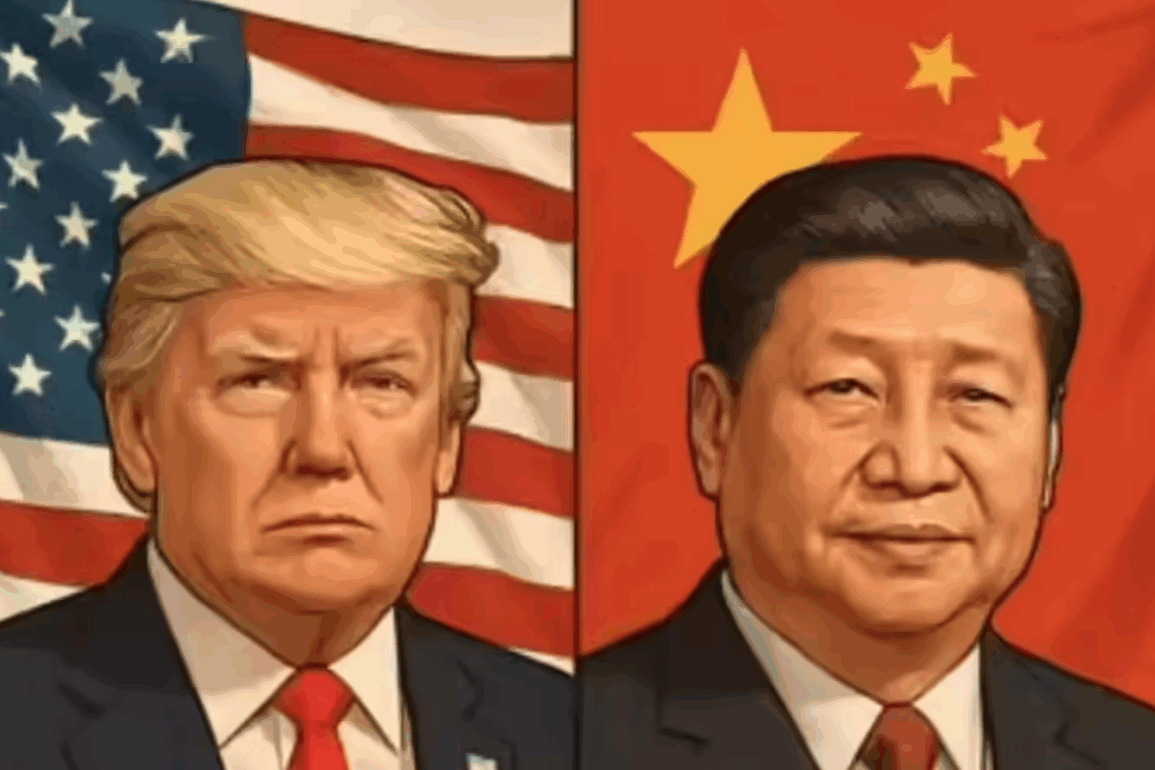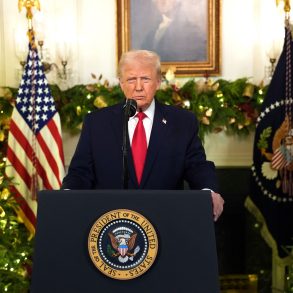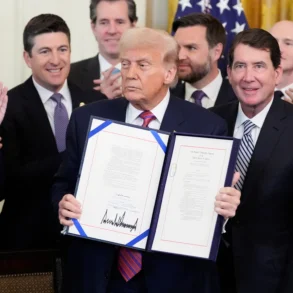In the bustling ports of Qingdao, China, massive container ships glide silently under the watchful eyes of towering cranes, a scene that symbolizes the intricate web of global trade. Yet, as of October 12, 2025, this vital lifeline faces renewed peril. Beijing has issued a stern warning to the United States, vowing countermeasures if President Donald Trump follows through on his threat to impose a staggering 100% tariff on Chinese imports. The dispute, rooted in China’s recent restrictions on rare earth minerals, risks unraveling fragile progress in bilateral trade talks and reigniting a full-scale tariff war between the world’s two largest economies.
A Tit-for-Tat Escalation
The latest flare-up began last week when China announced tightened export controls on rare earths—essential minerals used in everything from smartphone batteries and electric vehicles to jet engines and military radar systems. These controls require foreign companies to obtain Beijing’s approval for exporting products containing Chinese-sourced rare earths, regardless of where the items are assembled. China dominates the market, mining nearly 70% of the world’s supply and processing about 90%, making its moves a potential chokehold on global supply chains.
President Trump, responding swiftly on his Truth Social platform, labeled China’s actions “extraordinarily aggressive” and “extremely hostile.” He accused Beijing of holding the world “captive” by restricting access to these critical resources and announced plans for the 100% tariffs to take effect on November 1. Trump also floated additional export controls on what he termed “critical software,” though details remain vague. In a pointed jab, he suggested canceling a planned meeting with Chinese President Xi Jinping at the Asia-Pacific Economic Cooperation summit in South Korea later this month—the first in-person encounter since Trump’s return to office in January.
China’s Commerce Ministry fired back on Sunday with its first official statement on the matter, calling Trump’s threats a “typical example of double standards.” A spokesperson, speaking anonymously through a series of posted responses to media questions, emphasized Beijing’s preference for dialogue over confrontation. “China’s stance is consistent: We do not want a tariff war, but we are not afraid of one,” the ministry declared. It urged Washington to resolve differences through negotiations rather than “frequently resorting to the threat of high tariffs,” which it described as “not the correct way to get along with China.”
The ministry accused the U.S. of hypocrisy, pointing to its own recent actions: expanding export controls to include subsidiaries of over 3,000 Chinese firms (compared to China’s list of just over 900 items), and imposing new port fees on Chinese ships effective Tuesday. In retaliation, China announced Friday that it would levy “special port fees” on U.S.-operated and U.S.-built vessels, framing it as a “defensive action” against American measures that “severely harmed China’s interests.”
The Fragile Truce Under Siege
This exchange threatens to dismantle an uneasy truce forged earlier this year, when both sides briefly hiked tariffs to dizzying heights—up to 145% on Chinese goods and 120% on American ones—before dialing them back in April. Current U.S. tariffs on Chinese imports stand at 30%, largely tied to allegations of unfair trade practices and China’s role in the fentanyl trade, while China’s retaliatory levies hover at 10%. Trump’s broader strategy since January has involved aggressive tariffs on multiple trading partners to extract concessions, but China has proven resilient, leveraging its economic might to hold firm.
Beijing blames the current impasse on U.S. moves since September’s trade talks in Madrid, including the addition of Chinese tech firms to export blacklists. “These actions have seriously undermined the atmosphere of economic and trade talks,” the ministry stated, warning that if the U.S. “obstinately insists on its practice,” China “will be sure to resolutely take corresponding measures to safeguard its legitimate rights and interests.”
Experts note that China’s rare earth restrictions mirror U.S. policies on semiconductors, where Washington has long barred exports of advanced chips and manufacturing equipment to China—even if produced by third countries using American technology. “For a long time, the United States has overstretched the concept of national security and abused export controls,” the spokesperson remarked, decrying America’s “unilateral ‘long-arm jurisdiction'” as discriminatory.
Broader Implications for Global Markets
The rhetoric has already rippled through financial markets, with stock indices dipping amid fears of disrupted supply chains. Industries worldwide, from European automakers to American defense contractors, rely heavily on rare earths, and Beijing’s rules could squeeze production of semiconductors, renewable energy tech, and consumer electronics. While the ministry assured that export licenses would be granted for “legitimate civilian uses,” the dual-use nature of these minerals—for both commercial and military applications—adds layers of complexity.
For now, China has refrained from immediate retaliatory tariffs, opting instead to call for Washington to “promptly correct its wrong approach” and preserve “hard-won progress in negotiations.” Yet, with Trump casting doubt on the Xi summit and both sides digging in, the path forward looks fraught. As one analyst put it, this is less a negotiation than a high-stakes game of chicken, where the stakes involve not just billions in trade but the balance of technological and economic power in the 21st century.
The world watches closely, hoping cooler heads prevail before the November 1 deadline turns threats into reality. In the shadow of Qingdao’s cranes, the gears of global trade grind on—but for how much longer?








